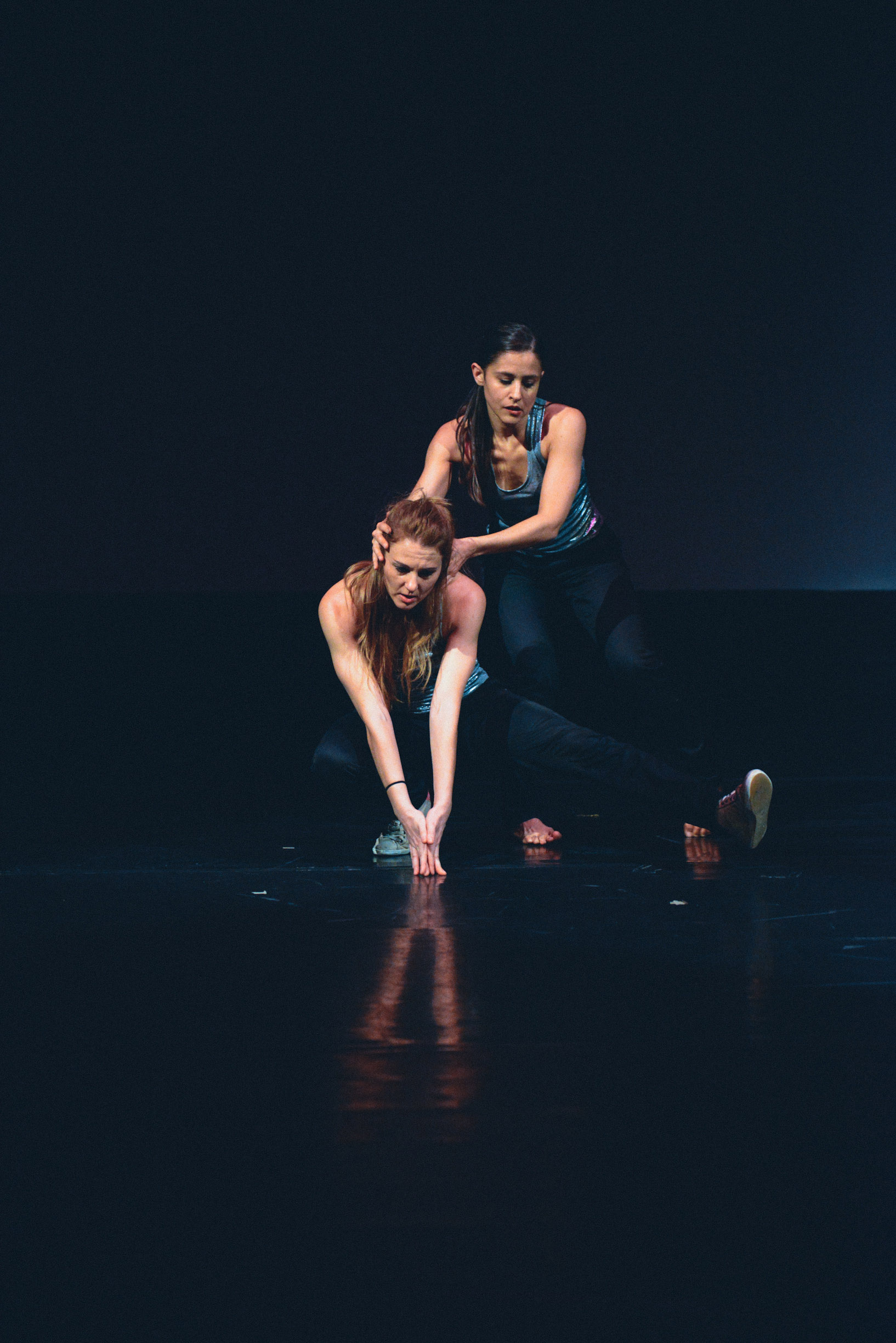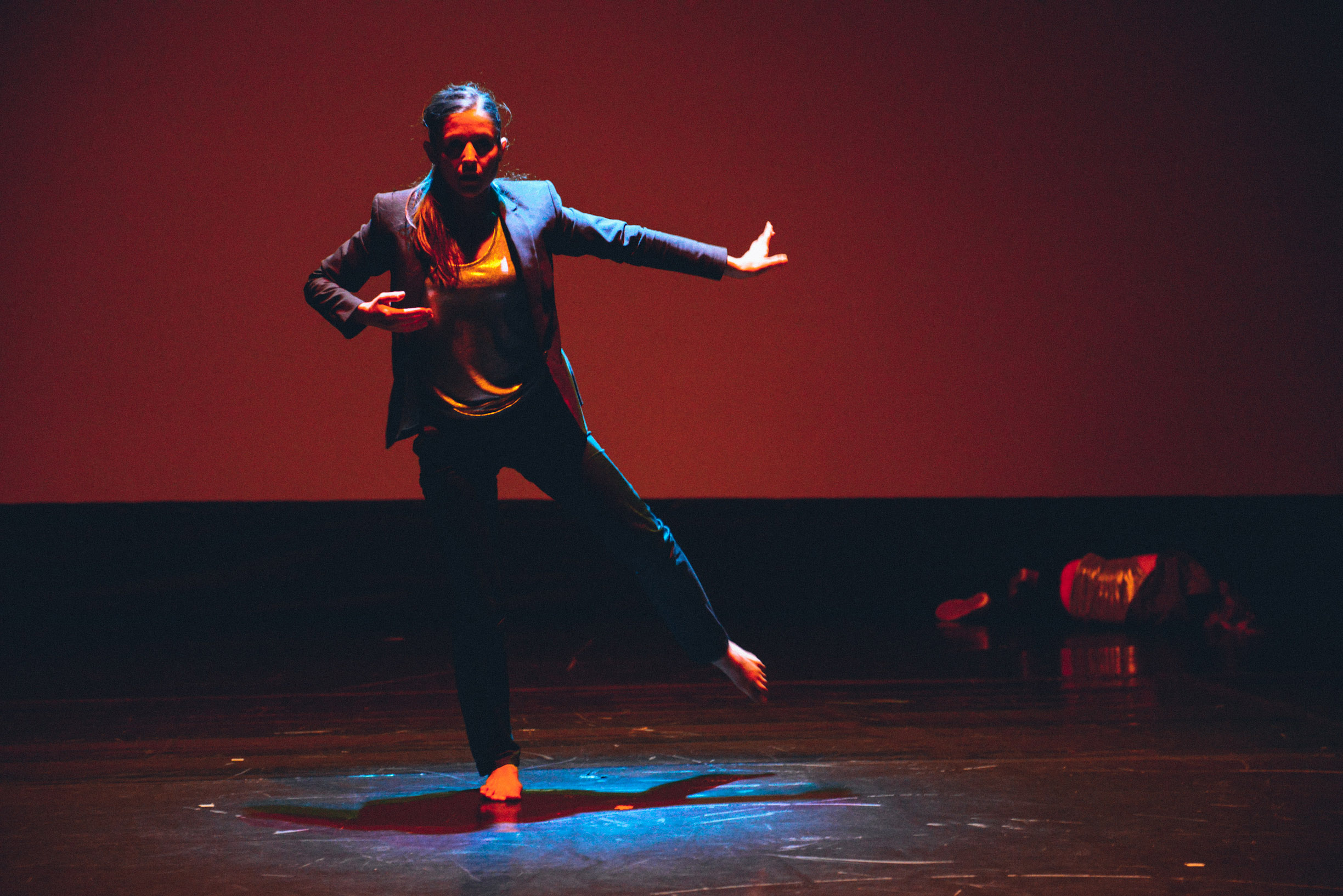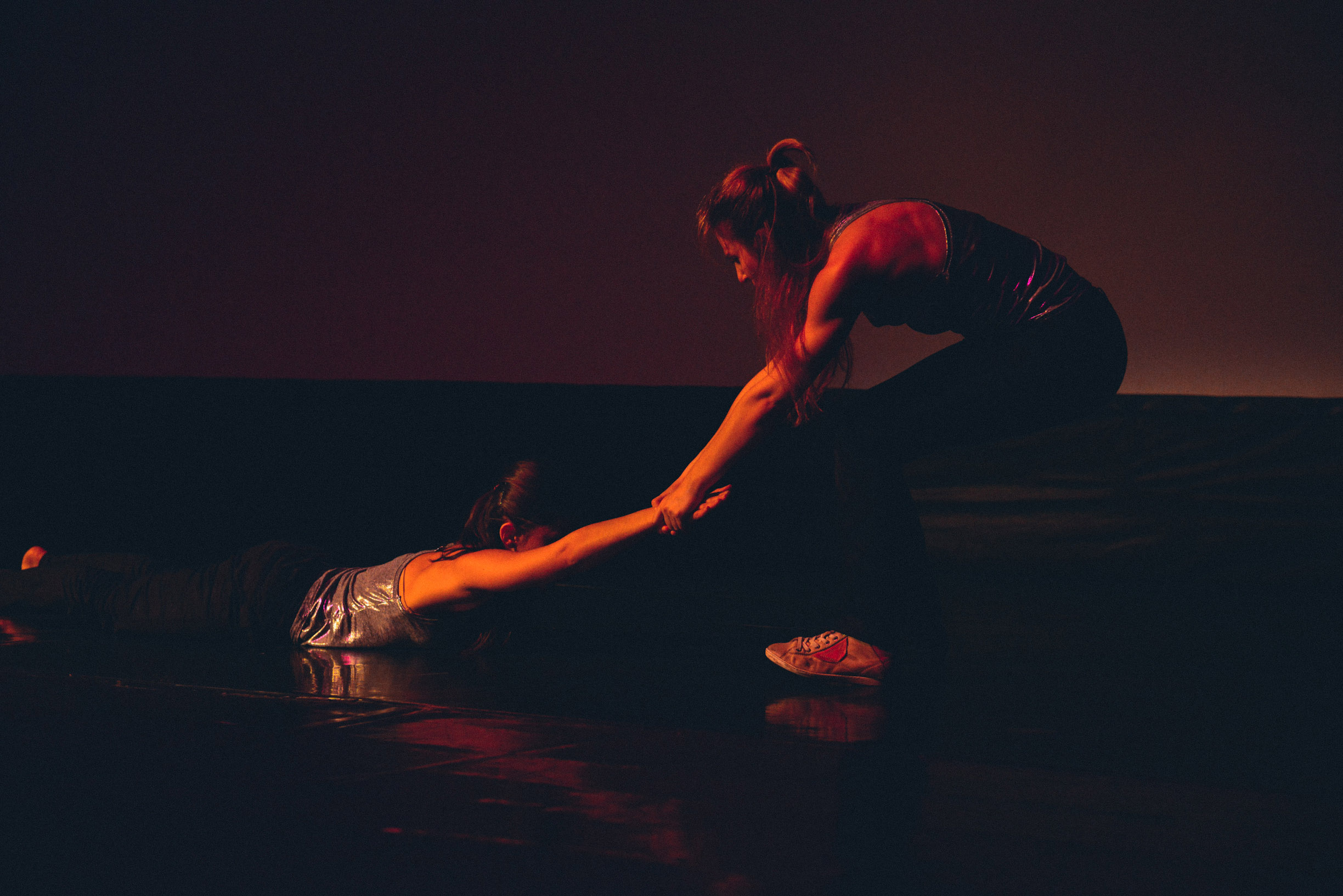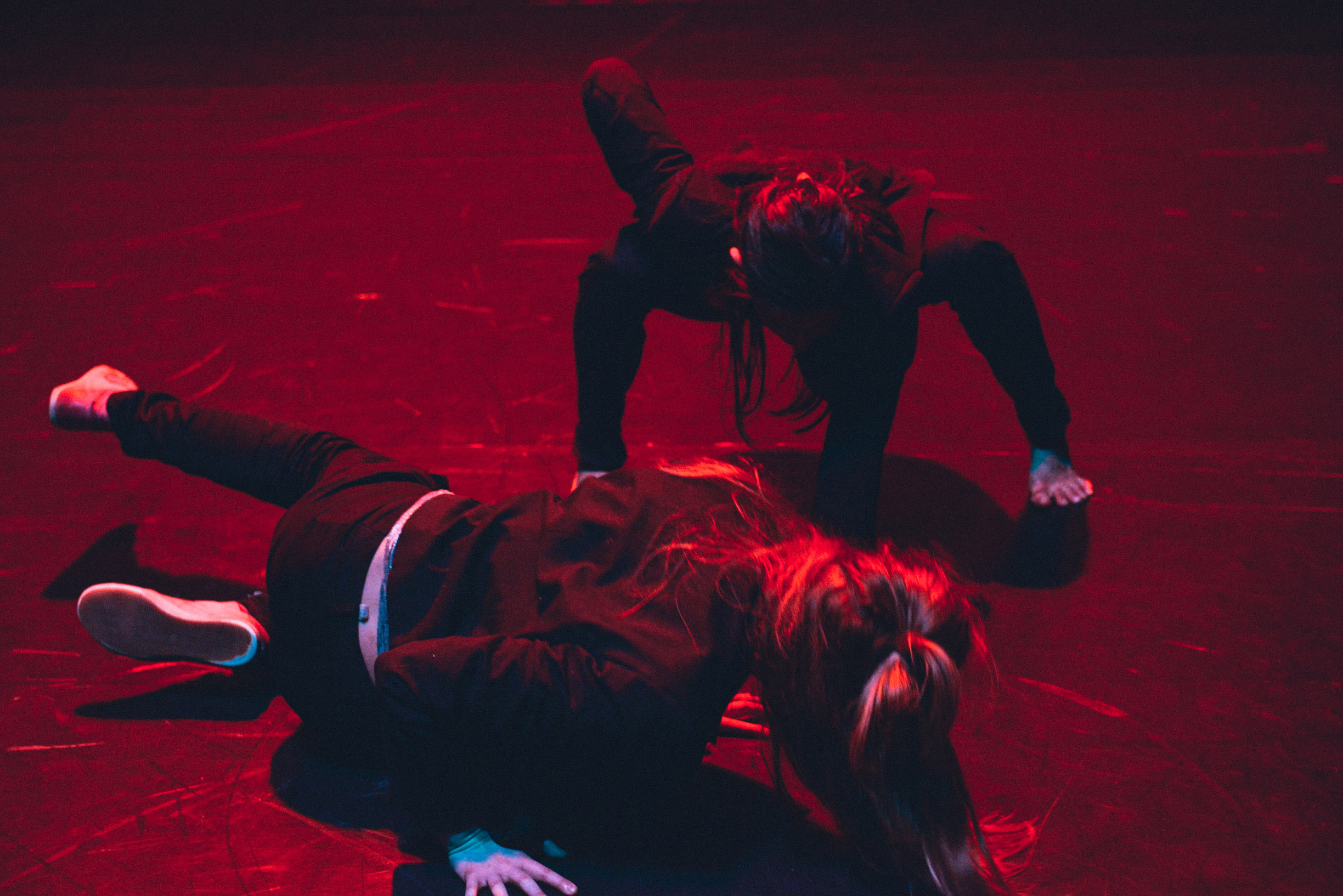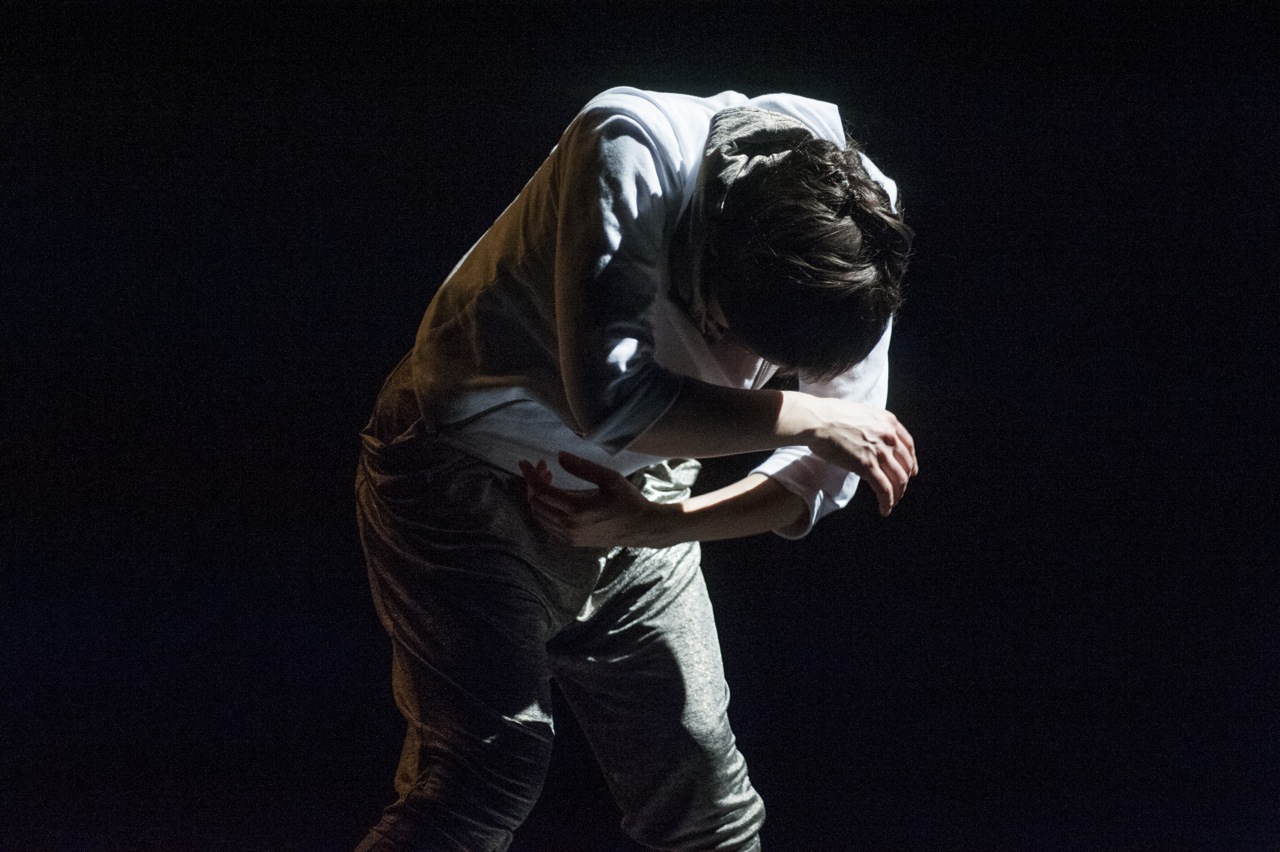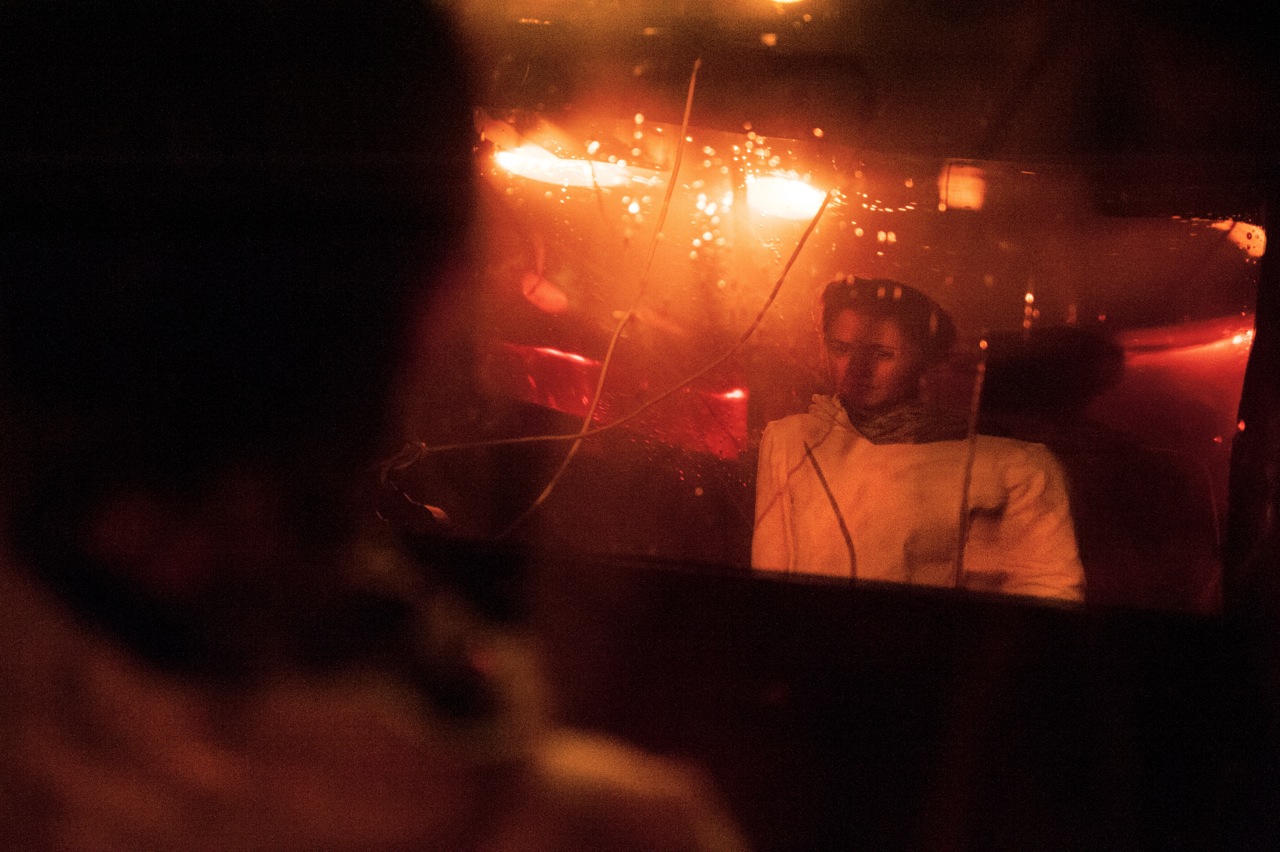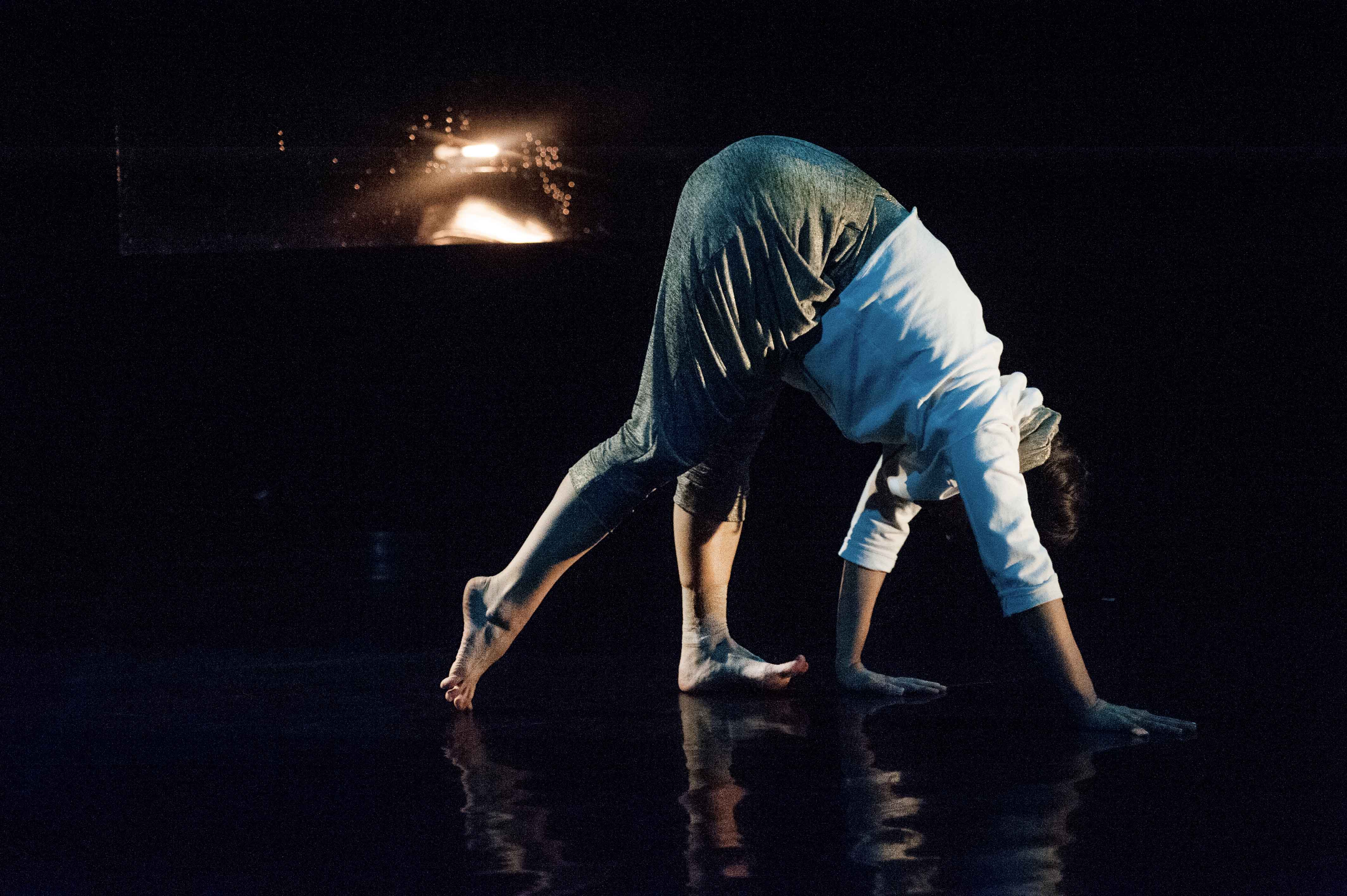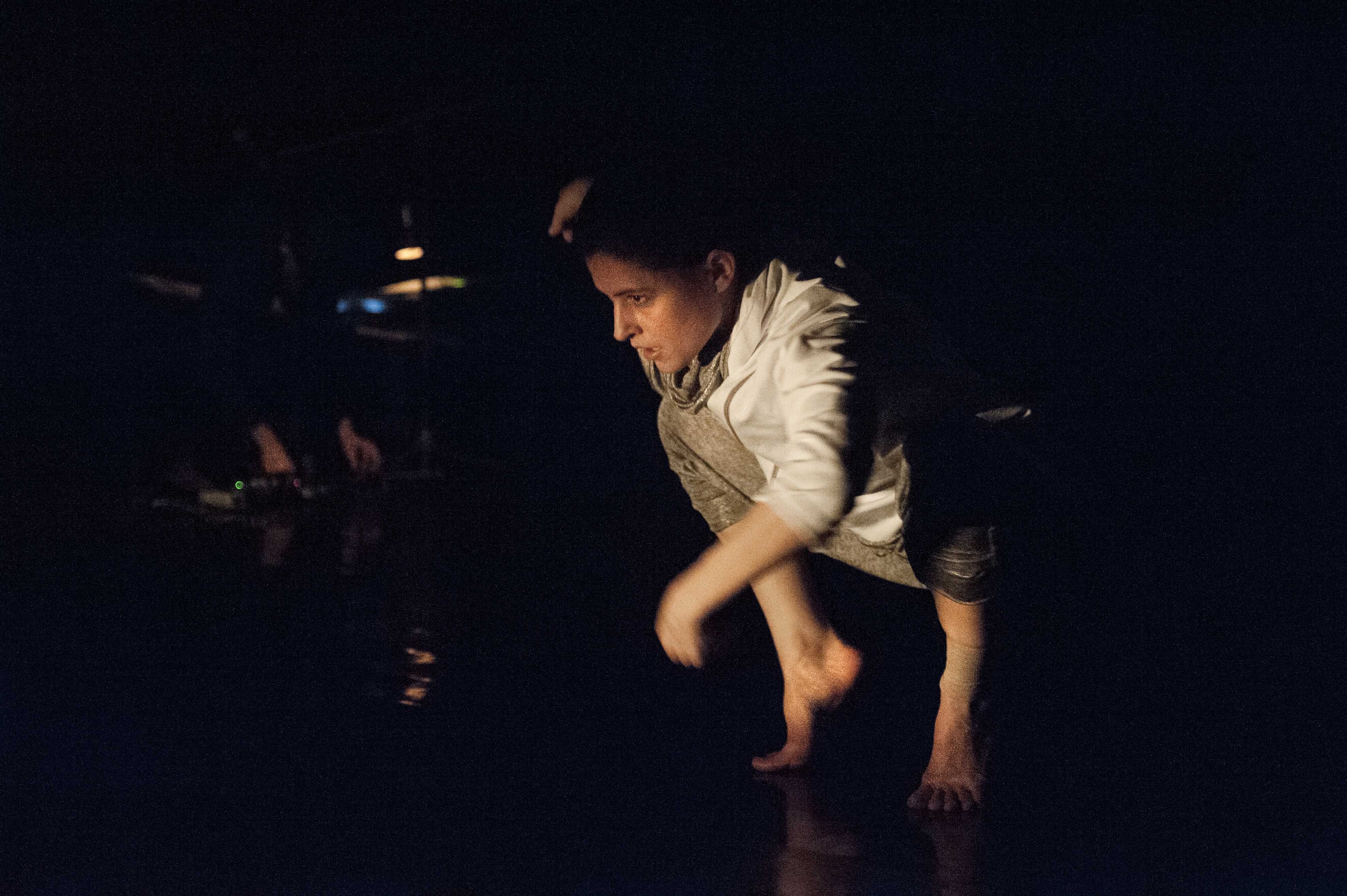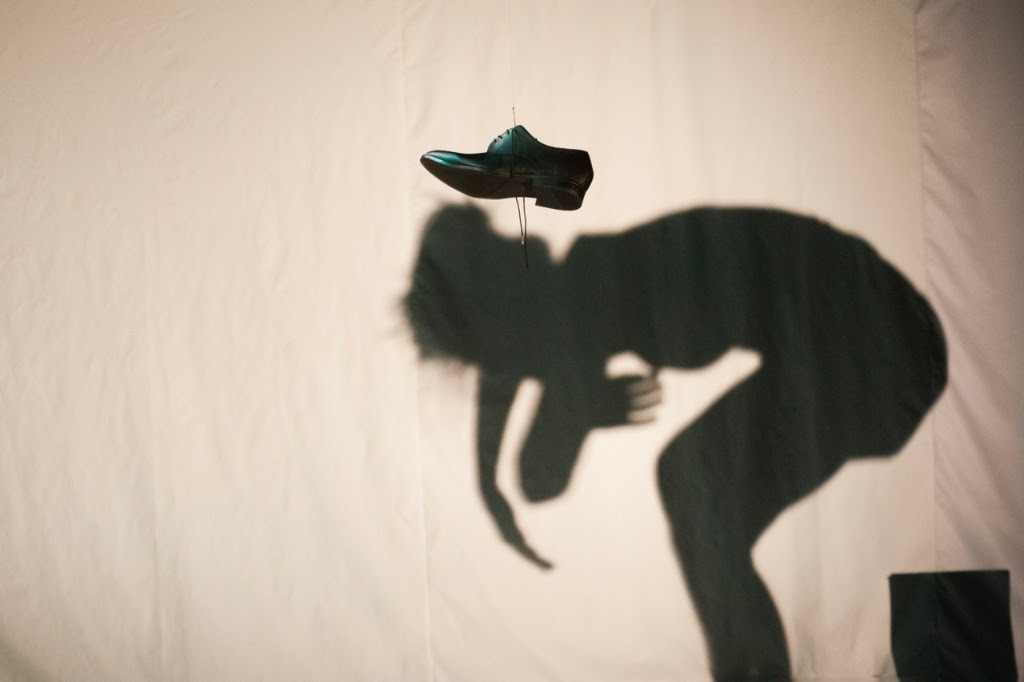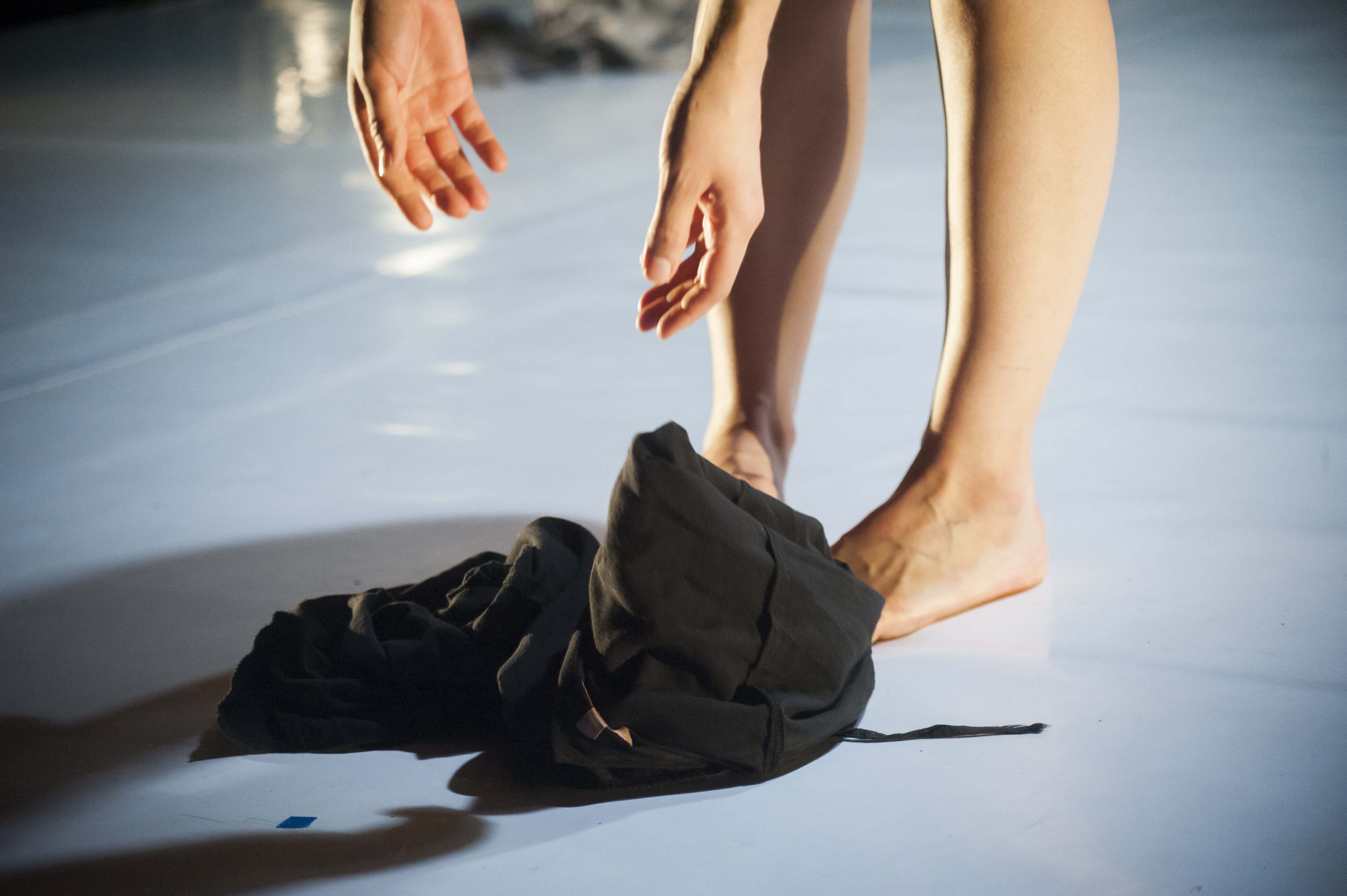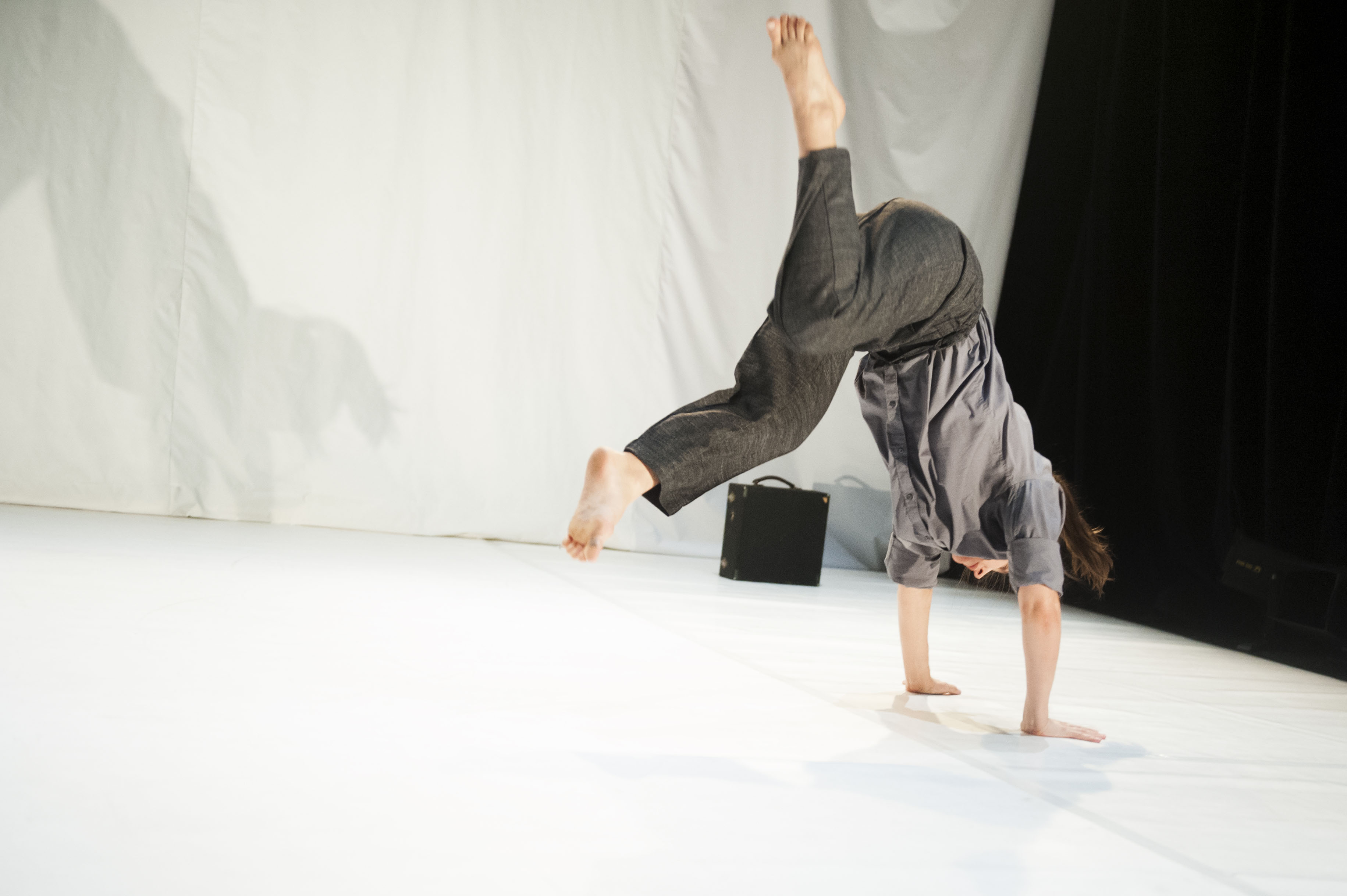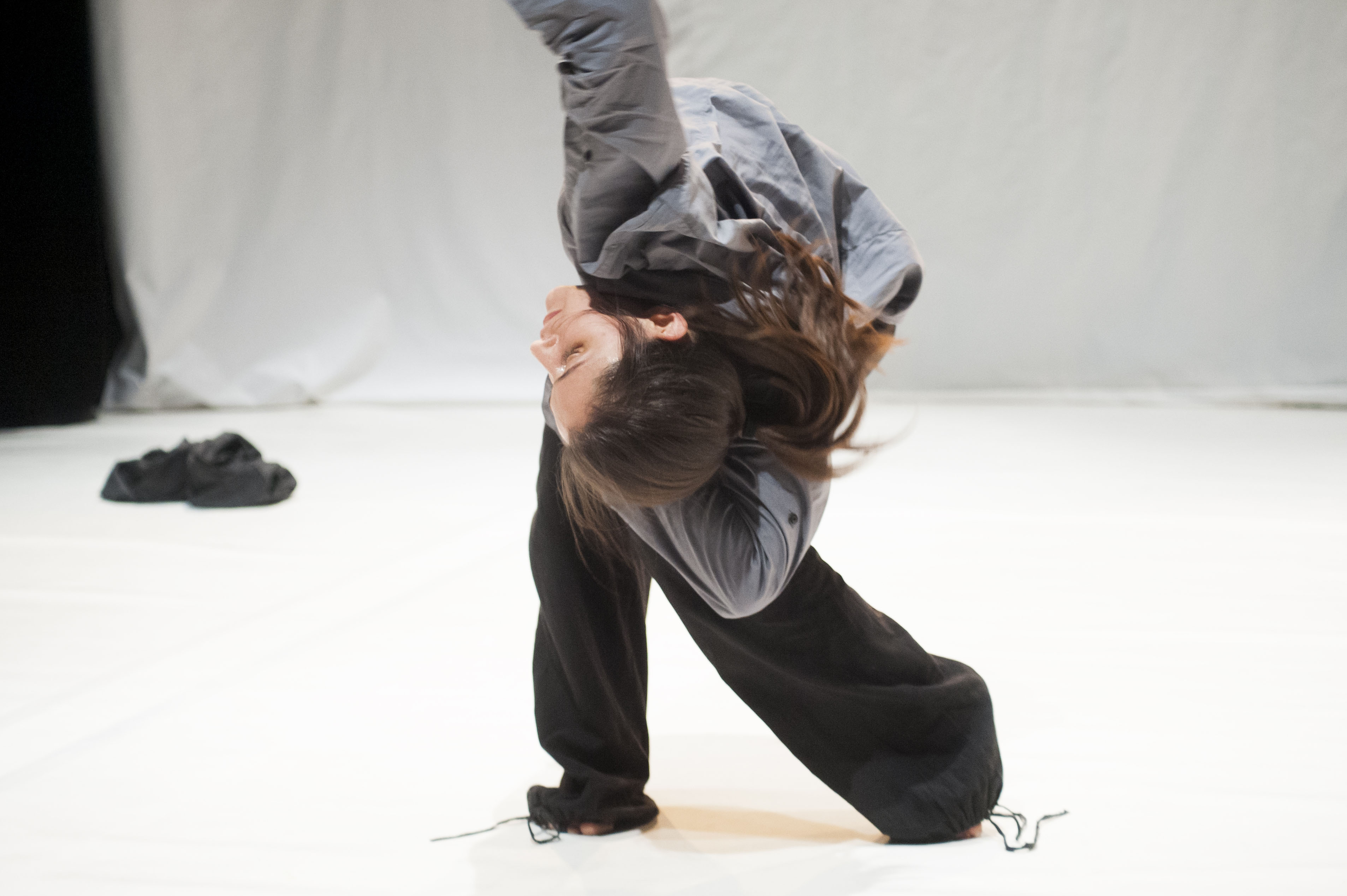Dancer and choreographer, Jana Tereková launched her dancing career at the Theatre elledanse featuring in choreographies by Šárka Ondrišová. With her dance and dance-theatre projects that brought in major Slovak and international choreographers and directors, she promptly drew attention among professionals. In addition to Slovakia, her projects were presented in Germany, France, Poland, Hungary, and the Czech Republic. In 2011 she received the Audience Prize at the festival Solo Duo in Budapest. She studied dance at the Centre National de la Danse in Paris.
Jana Tereková is, together with Soňa Ferienčíková, the founding member of the civic group bees-R that focuses on the production of dance and interdisciplinary productions with international dimension. The group has implemented a number of projects that brought exceptional cooperation among leading international and Slovak artists. The projects include She had 70 skirts (2018) that worked with the principles of puppet theatre, the multigenre production Mirroring (2017) that is original in integrating dance, poetry and lighting design, or the dance production Cyborg CREATION (2013) with poetic texts by Michal Habaj. The multimedia production Phenomena Research (2012) is an analysis and portrayal of the phenomena that surround man, as expressed by dance, music, video and digital poetry. They confront the perception of biometric data prior to becoming familiar with the person, and afterwards. The production raises the issue of the quest for source of information that can define us in most realistic manner. The production SEE (2012) links dance with sophisticated sound compositions as presented by the Swiss musician Silas Bieri and plain emotional power of songs presented by the Italian author of lyrics and musician Massimo Giangrande.
Ms Tereková collaborated on and also featured in a documentary production by Ján Šimko Steel My Heart (2012) inspired by the stories of people connected to the steel works in the city of Košice, East Slovakia.
Together with Soňa Ferienčíková, Peter Šulej and Michal Habaj she worked on a project New Codices. The dance and poetry production drew from contemporary poetry, particularly from the collection Generator X: New Codices (Macsovszky, Habaj, Šulej). The production offers a commentary on the situation in present-day world: using concrete cases and images, the authors – assuming the position of decadent thinkers and artists – ridicule dated clichés, conformism and interpersonal conduct. It is a unique combination of movement and text. With the help of parody, self-mockery and sarcasm it opens the world of absurdity.
Signature style:
Ms Tereková’s work is best epitomised by the notion of multigenre, which also applies to her small-scale solo projects. It arises from her creative stances characterised by intellectual multilayer and plasticity of the author’s perception of the world and art. Her choreographies are inspired by forms of contemporary poetry that significantly determine the dramaturgical context of her dance productions.
Her identification with the content of poetry, an ability to absorb the rhythm of verse into movement sequences, and creation of vertical intellectual superstructure create the vantage point for her small-scale works. Her defined perception of stage form places her particularly into solo and duet compositions. By setting out correlation, she opens dialogue with the spectators, in which she is uncompromising in unveiling the matter of her interest. She throws the spectators in straight into challenging socio-anthropological themes. In her projects, Ms Tereková creates a symbiosis of muses: movement, text, music and image. The complexity of her artistic and public view, along with her performative qualities create a subtle philosophical-movement structure that is significant for her work.
In making the dance production Cyborg CREATION (2013), Ms Tereková found inspiration in the poems by the contemporary Slovak author Michal Habaj. She built her dance duet (Eva Lacková, Jana Tereková) – both in terms of form and content – on the structure of the poetic text from the collection Roots of Heaven and Michal Habaj by Michal Habaj. She uses the metaphor of cyborg to presents a parody of the strive for perfection through mechanisation and technologization, and human need for calming normativity and unification even at the cost of suppressing diversity, originality and individuality. Cyborg in its nature represents a synthesis of organic and mechanical parts that become determining for relationships, texture and aesthetics of choreography of the dance production. The movement material of the duet oscillates between strictly structured, formally precise choreography of mechanical movement sequences of the dancers. The unified performance, synchronised dance passages, staccato rhythm given by the beat of the verses performed control of the entire stage space. Film-like character of the cut aids the illusion of fundamental change of the atmosphere on stage. Within a split of second the dancers find themselves on a new level of their characters, creating their dynamic metaphor.
In her next production, Ms Tereková moved the concept that determined the framework of the piece, by visually accentuating the set design. She plastically linked the experimental movement solo Mirroring (2017) to contemporary poetry by Zuzana Husárová and organic electronic music by Joseph Champagnon. In the magic visual moments of multiplication and alternative meanings that are precisely created in the mirroring set in vibration, she creates linear variations of the image of her body all the way to the limit of acrobatic deformation. Yet, she instantly she incorporates them precisely into the space where she balances between its real perception and in the vibrating mirroring of the twisted mirrors. This is where her performative movement quality of precision and control of swift change of the dynamic of movement comes to the fore. Those qualities are indeed characteristic for her as an artist. The changes in movement are virtually unpredictable in her case. Movement sequences on the floor smoothly overlay with movement while standing and in jump. The vital smoothness of her dance combined with her ability of instant acceleration arise from her spontaneity. The stage created by Ján Ptačin becomes space for multidimensional images of fascinating imperfection of beauty and lightness, and of the verses by Zuzana Husárová in verbalised rhythmic divide of reality into tiny contemplations about its nature.
In her most recent dance production She had 70 skirts (2018), Ms Tereková discovered new possibilities to use the principles of puppet theatre. The project is a choreographic mosaic of fragments of a story of greed, destruction and extinction. The dancer articulates the leitmotif through the relationship of body and outfit. The outfit which Ms Tereková creases, pulls or changes turns into the testimony of what had happened. Laid out on the floor, it symbolises traces on the crime scene, a map of memories, phantoms of the past. The body that created them is gradually giving into the will of the outfit, losing the contours of human being. It is becoming deformed in space and positions outside anatomical presumptions. It is manipulated by the material, becoming a puppet. The lines between live and inanimate, and between the past and present disappear. The body of the dancer turns into a rug, imprints on the floor are multiplied to emerges, in the final part, from the ceiling and fill the air of the stage space. Into the image of destruction of humanity, the choreographer lets the sound of a record player, the sound of which comes from distance like an illusion, wandering memory. It is nostalgia, which, however, has no one to move.
Jana Tereková presents fundamental issues without wrapping them in stylisation. She doesn’t extort agreement by smooth generalisation; she leaves the edges of opinion sharp. She focuses on precise definition of the fundamental existential theme that liberates from poetic ballast. She turns into abstract of the extent of context by placing it into the multidimensional symbolism of movement gesture, word, costume and set design with which she sometimes actively works during the performance. The themes of her choreographies can be defined as quite a straightforward question. The choreographer invites the audiences to create joint answers.
A list of original works:
2012 – SEE, BEES-R, directed by: Davide Sportelli, choreography: Jana Tereková, Soňa Ferienčíková, Jaroslav Ondruš, Zuzana Hianiková. Première: Theatre ellledanse, Bratislava
2012 – Steel My Heart, directed by Ján Šimko, choreography: Jana Tereková, Soňa Ferienčíková. Première: A4 – Space for Contemporary Culture, Bratislava
2012 – Macsovszky, Habaj, Šulej: Generator X: New Codices, choreography: Jana Tereková, Soňa Ferienčíková. Première: A4 – Space for Contemporary Culture, Bratislava
2012 – Phenomena Research, choreography: Jana Tereková (BEES-R). Première: A4 – Space for Contemporary Culture, Bratislava
2013 – Cyborg CREATION, choreography: Jana Tereková (BEES-R). Première: A4 – Space for Contemporary Culture, Bratislava
2017 – Mirroring, BEES-R, choreography: Jana Tereková. Première: A4 – Space for Contemporary Culture, Bratislava
2018 – She had 70 skirts, BEES-R, choreography: Jana Tereková. Première: TICHO a spol., Bratislava.
Videos from productions:
Cyborg CREATION, 2013
Author of the trailer: Richard Chomo
archive of the bees-R
The video can be found at the following link: www.vimeo.com/119251354
Mirroring, 2017
Authors of the trailer: Richard Chomo, Martin Čech
archive of the bees-R
The video can be found at the following link: www.vimeo.com/301466209
She had 70 skirts, 2018
Author of the trailer: Richard Chomo
archive of the bees-R
The video can be found at the following link: www.vimeo.com/295576507

